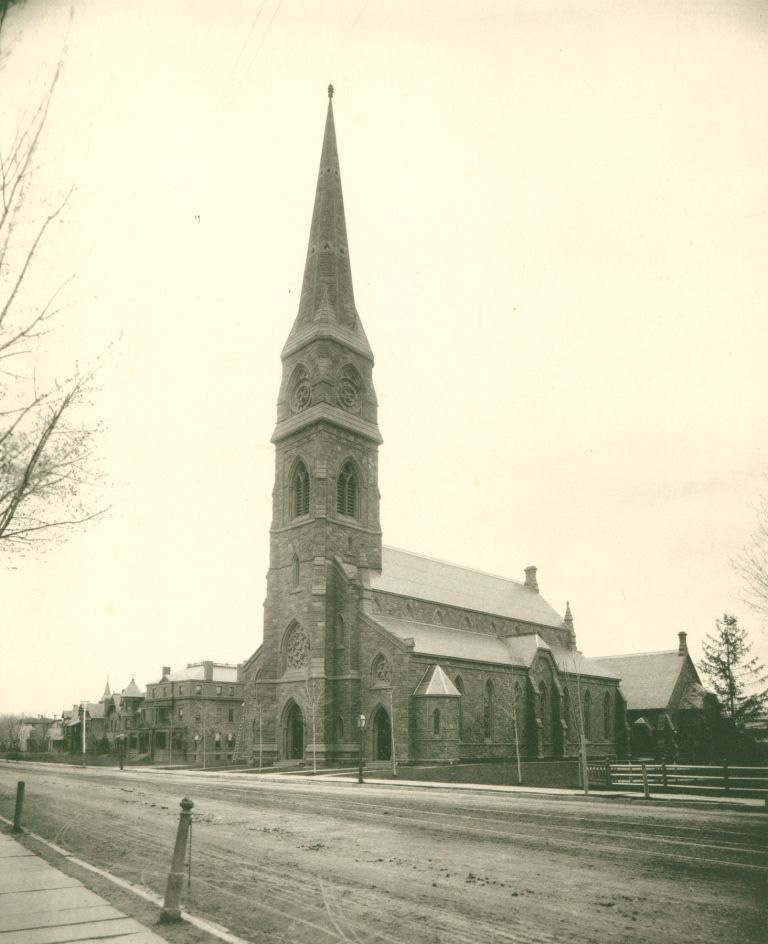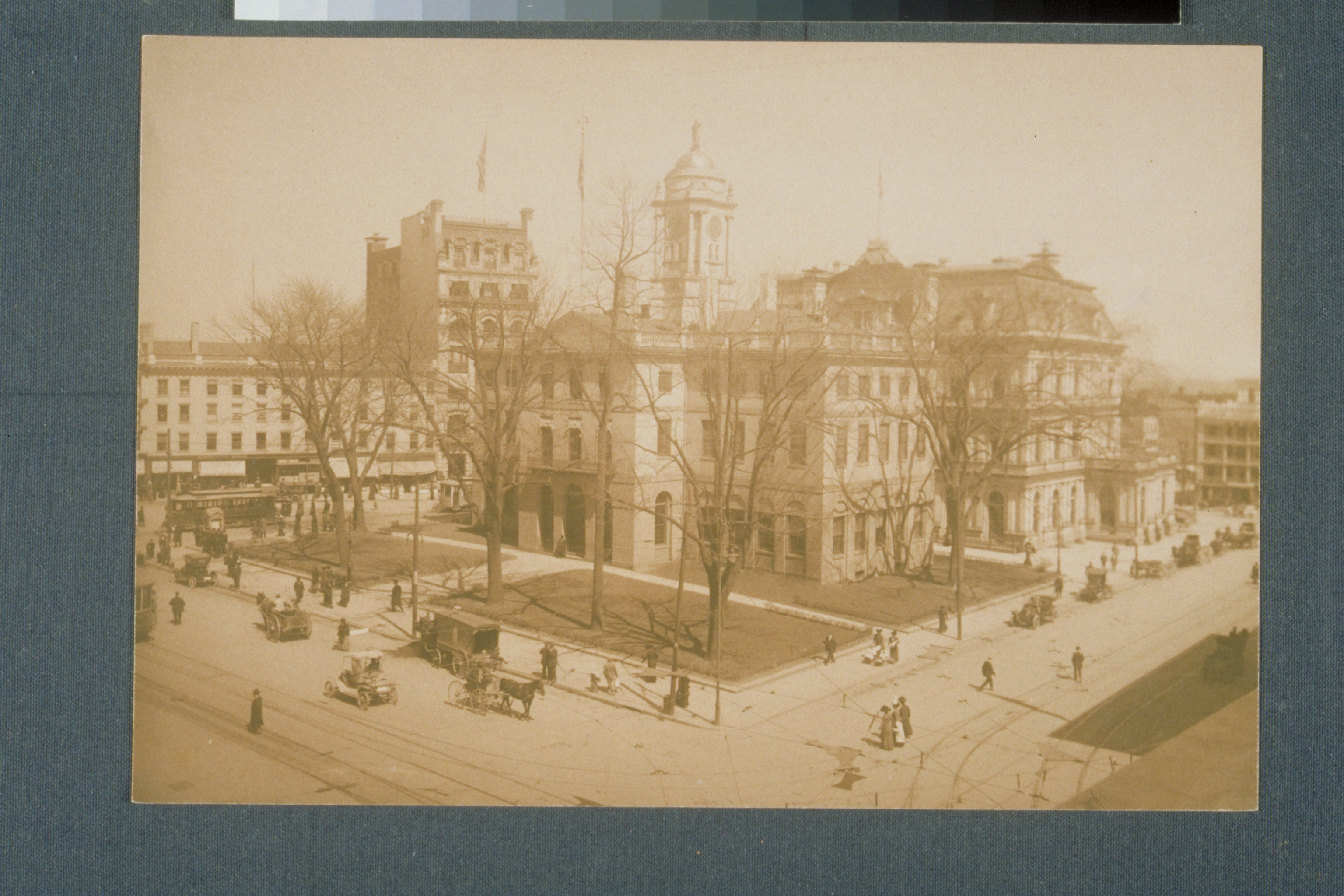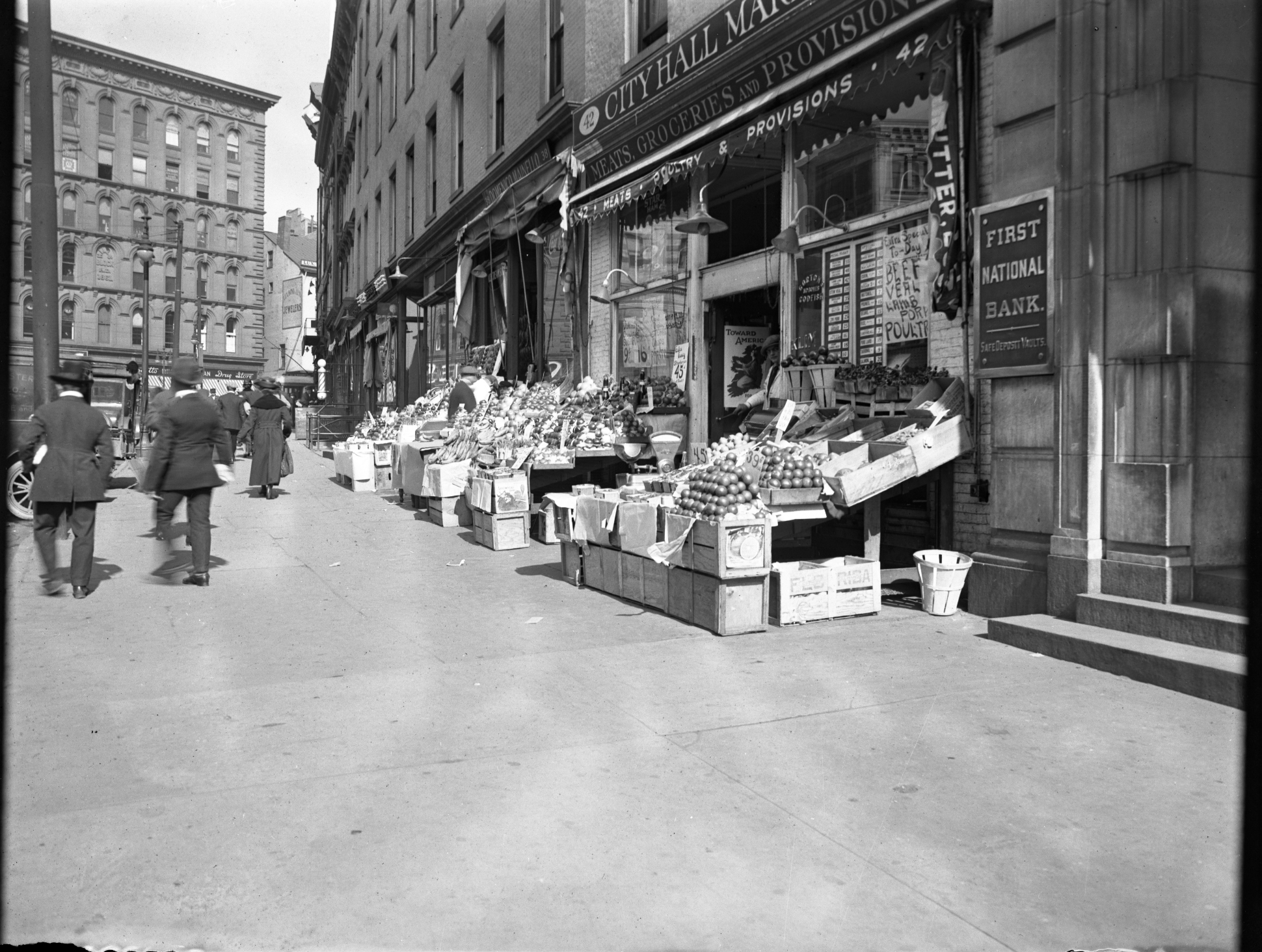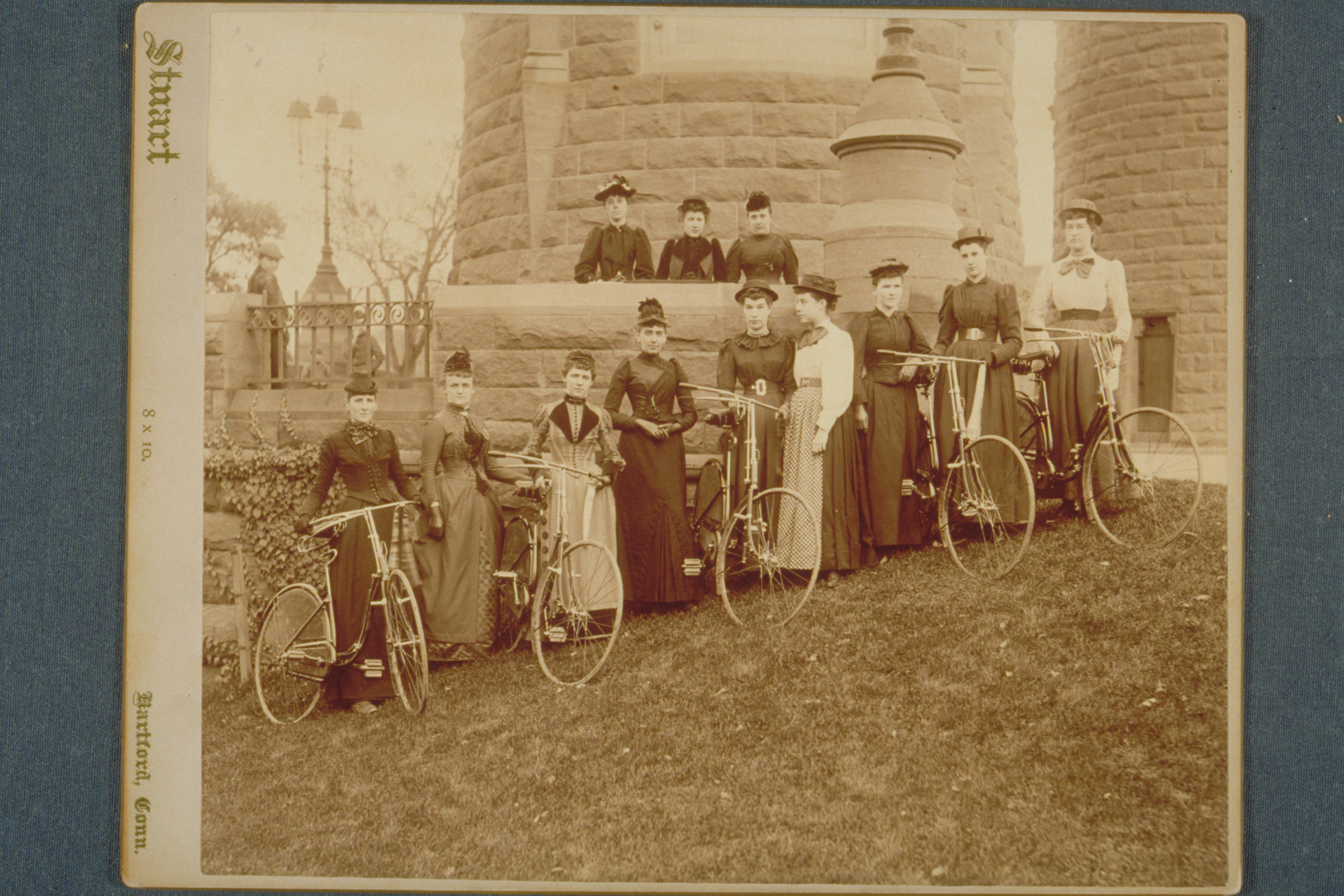Churches
Samuel Clemens struggled with religion his whole life, but his wifi Olivia was devout in her beliefs. Smauel’s best friend, Joseph Twichell, was the Reverant at the Asylum Hill Congregational Church, so the Clemenses were regular attendees at that church. While George Griffin, their butler, attended the Metropolitan AME Zion Church.
Asylum Hill Congregational
Asylum HIll Congregational church was built in 1865 at the western edge of the city. As Hartford developed as a manufacturing, insurance, and shipping port in the mid-19th century, many of the wealthier residents built homes on its western fringe, previously a scene of fields, meadows, ponds, and the city’s poorhouse. Downtown churches now seemed in convenient Sunday morning travel, and pious Congregationalists had run a Sunday school in Asylum Hill for several years before the church building was built. The architect, Patrick Keely, designed a spired stone church more in the English parish church tradition than the simple wooden meeting-house style previously used by Congregationalist congregations. The church's upper-crust Protestant reputation was such that Samuel Clemens, on a business trip to the city in 1868, called it “The Church of the Holy Speculators.” When they arrived to live in the city in 1871, he and Olivia became regular attendees of the church, worshiping at a downtown church that had a better music program only when their close friend, Rev. Joseph Twichell, was away. Samuel took part in church social functions, including a much-publicized spelling bee, and often accompanied Twichell to speaking engagements on behalf of the church at hospitals and missions for the poor.
Metropolitan AME Zion Church
In 1816 African American Christians in Hartford rejected being segregated during services in the balconies of churches dominated by whites, and began to hold Sunday meetings on their own. Ten years later a group formed an African Religious Society with its own building on Talcott Street. The society split in 1833, with one faction forming a Congregational church and the other a Methodist Episcopal church.
The Methodist group affiliated with the national African Methodist Episcopal Zion Church (AME Zion Church) founded in New York, also part of the wave of African American religious refusal to accept segregation and bias. The African American Episcopal Zion Church was a denomination separate from the African Methodist Episcopal Church, founded in Philadelphia (though today they share communion.) African Americans had been active in the American Methodist church since its beginnings in the 18th century, with a Black missionary named Harry Hosier aiding Francis Asbury, the white Englishman credited with spreading Methodism in the United States. The specifics of the faith appealed to African Americans, particularly a stress on the equality of sinners before God and the church’s strong anti-slavery stance. Among the prominent figures who were members of A.M.E. Zion congregations were Frederick Douglass, Harriet Tubman, and Sojourner Truth.
In the 1850s Hartford’s AME Zion Church was required to move from its site on Talcott Street when the land became part of the new city park, Bushnell Park. The congregation built a new church on Pearl Street. By the time Samuel and Olivia Clemens moved to the city in 1871 the African American community had grown to about 1,000 people in a total city population of about 38,000. The Clemenses’ African American butler, George Griffin, was a “strenuously religious” deacon in the Pearl Street church, Samuel Clemens wrote. In this role he often interceded on behalf of members of the Black community who “sought his advice in their troubles, and he kept many a case of theirs out of the court by settling it himself.” In March 1881 Clemens spoke at the church, joined by the choir.
In 1926 the church moved to a former Methodist church built in 1873-74 – the same years that the Clemenses were building their house. Like the Clemens home, it’s an example of the High Victorian Gothic style, with medieval-style features such as arched windows, buttresses and ceiling beams, along with decorative polychromatic masonry. The original Methodist congregation sold the building to a Jewish congregation, and it had served as a synagogue for eight years before Metropolitan AME Zion Church (as it is now known) purchased the building.
Talcott Street Church
In 1819 a group of African Americans living in Hartford were tired of having to sit in the back of churches and given assigned seating in galleries. They decided they would worship on their own terms and started in a small conference room of the First Church of Christ, now Center Church. They became the first Black Congregational Church in the state and the third oldest in the country. A year later they moved to a building on State Street and formed “The African American Religious Society of Hartford.” Plans began to find a new house of worship where all were welcomed, and seating was wherever one chose. Eventually they purchased a property at the corner of Talcott and Market streets and built a stone and brick church. It was the epicenter for Hartford’s Black community and a meeting place for abolitionists and the social movements that emerged during the period. Additionally, the church realized they needed to educate their members in order to help them succeed and therefore established a school district where Black children could learn how to read and write; the only place they could do so for many years.
One of its most prominent early pastors was a man named Dr. James W.C. Pennington, a former fugitive enslaved man who escaped from Maryland via the Underground Railroad. The fear of being returned to enslavement stayed with him for years until Harriet Beecher Stowe’s brother-in-law, John Hooker, procured his freedom for $150. He received his freedom papers on June 3, 1851. His Bible remains at the church today.
Mark Twain gave a reading at Hartford’s Unity Hall on May 22, 1889, as a fundraiser and benefit for the Talcott Street Church who were trying to raise money for a new organ. His performance and readings included, “On the Decay of the Art of Lying,” and “How I Escaped Being Killed in a Duel,” among others.
By 1860 the church was renamed the Talcott Street Congregational Church and remained so until 1953 when it joined the congregation from Mother Bethel Methodist to form Faith Congregational Church, the name it goes by still.




